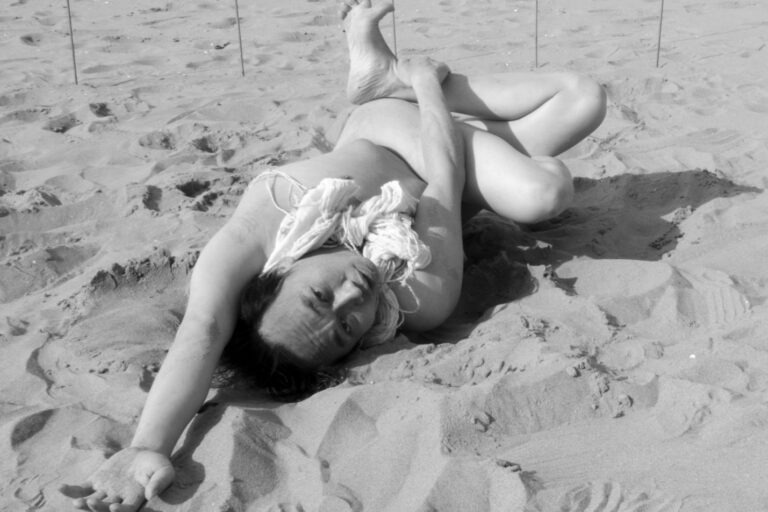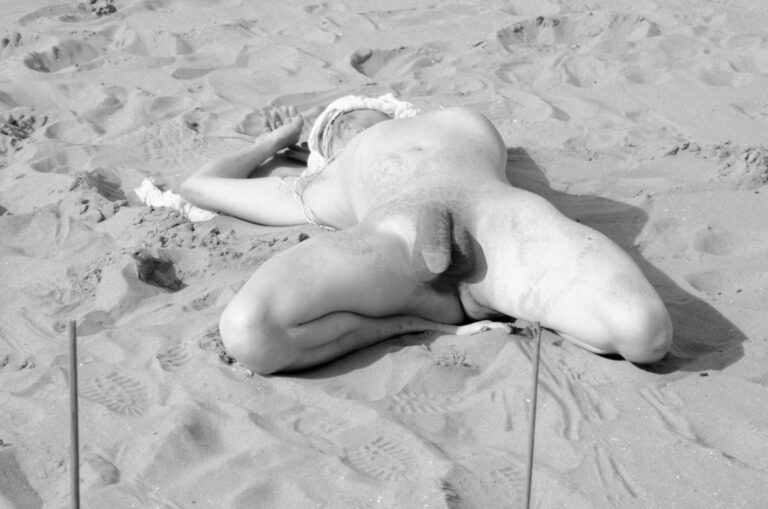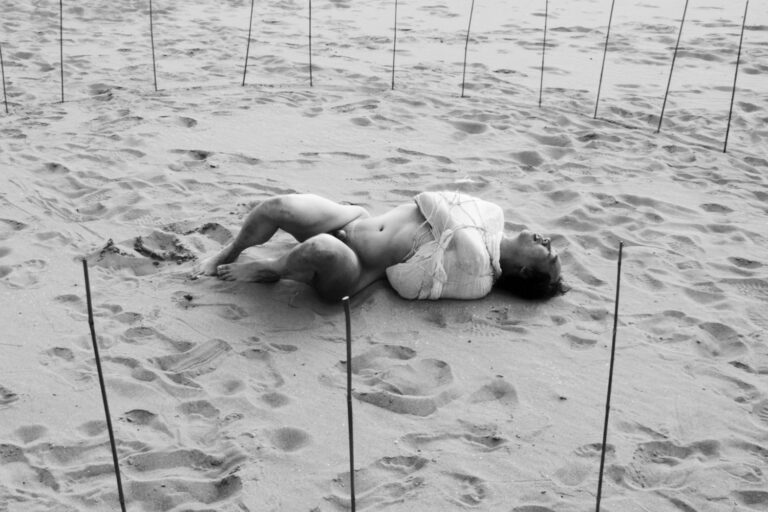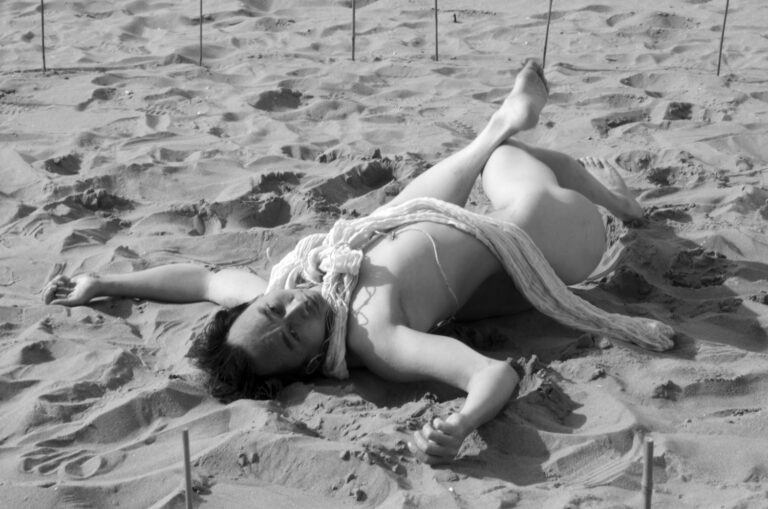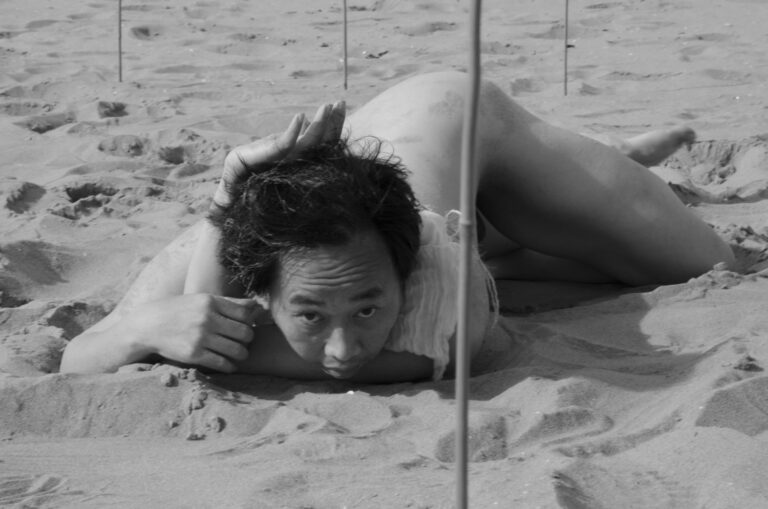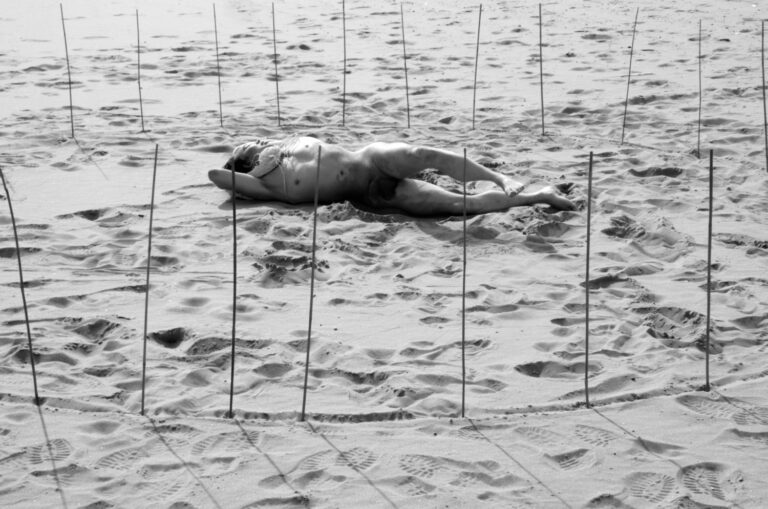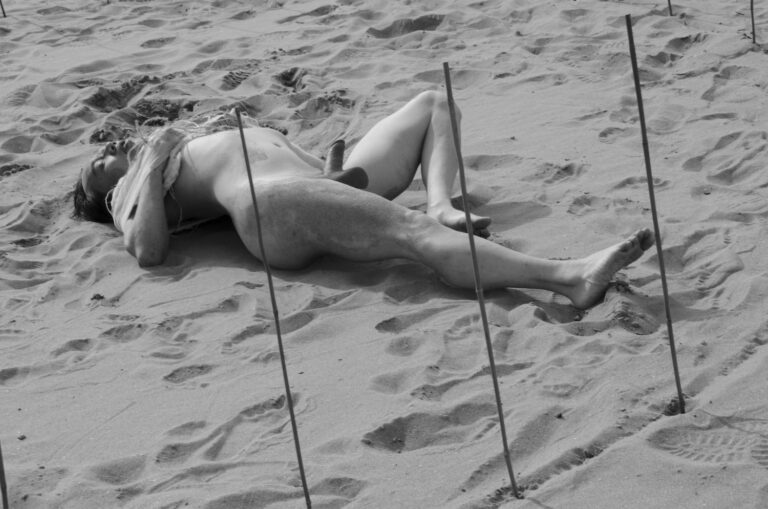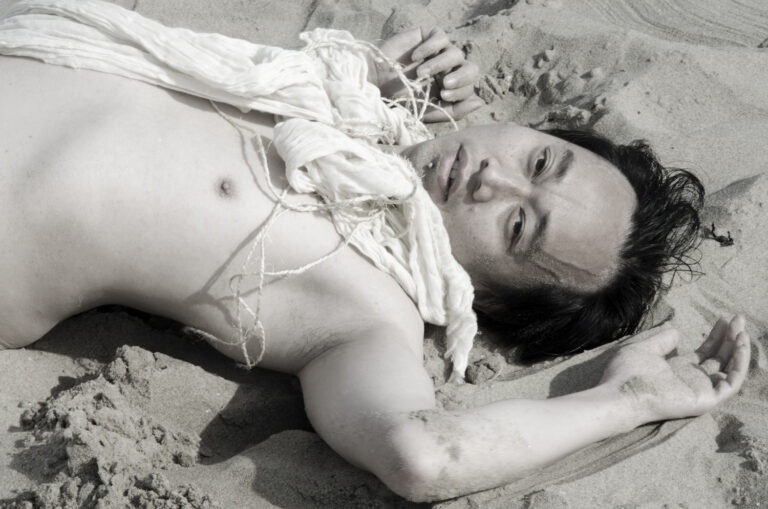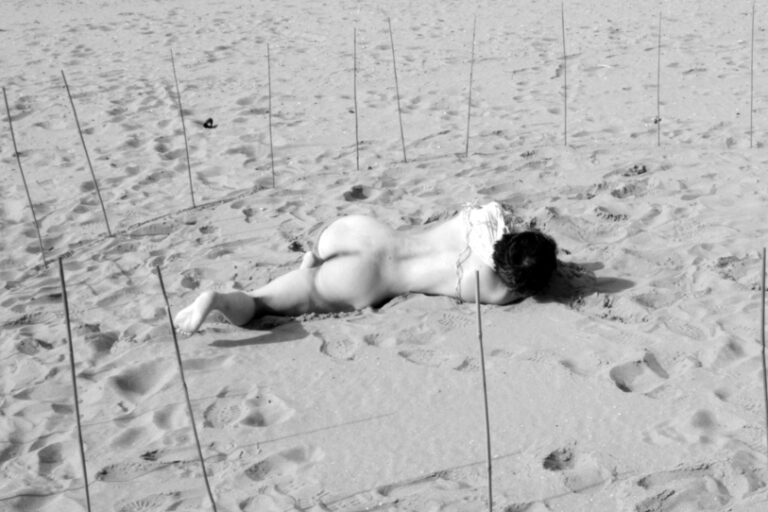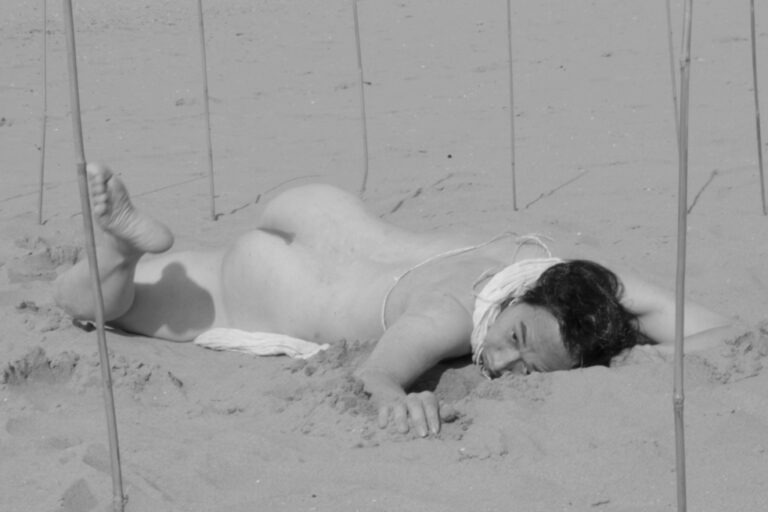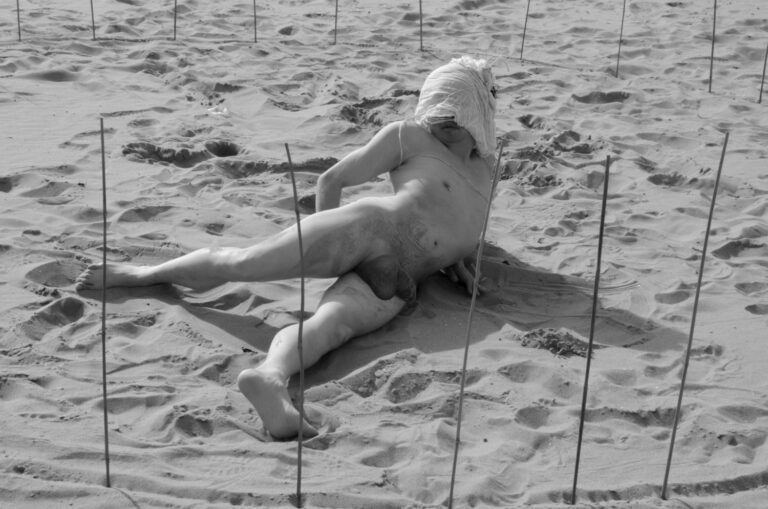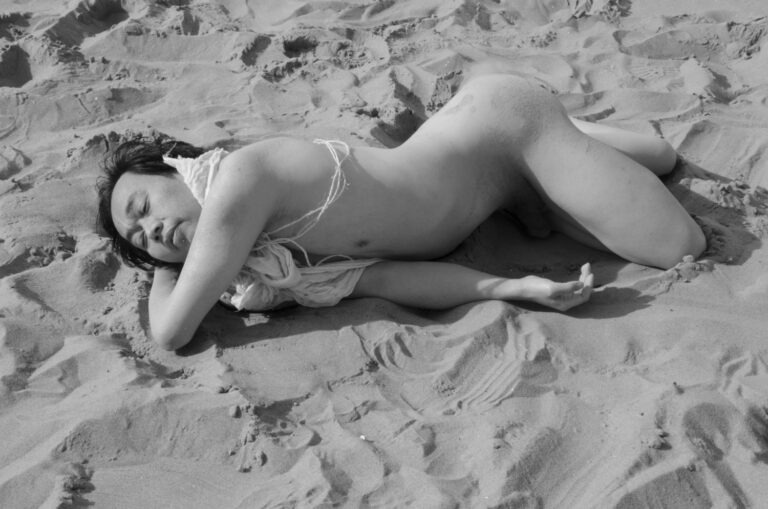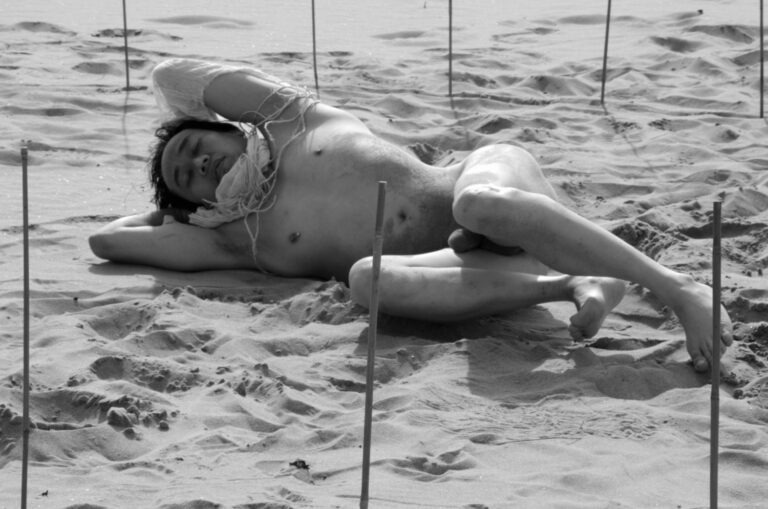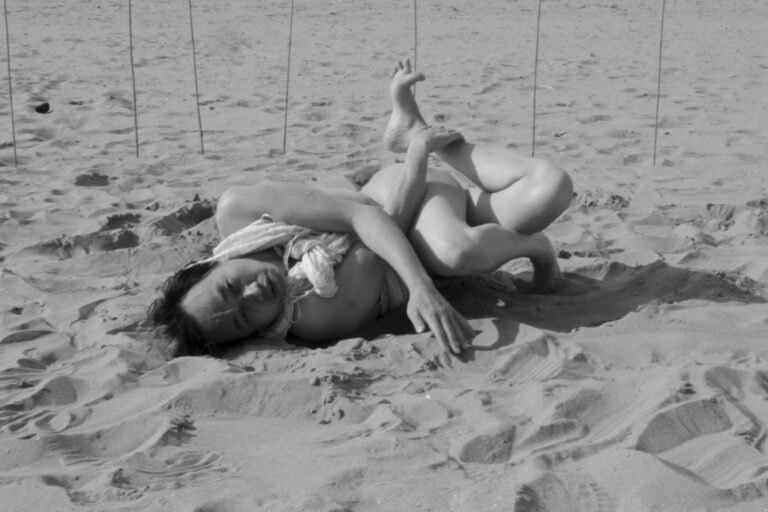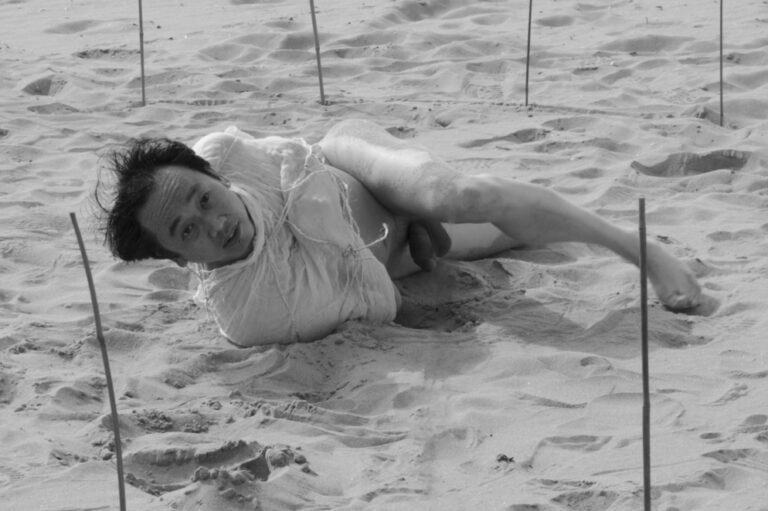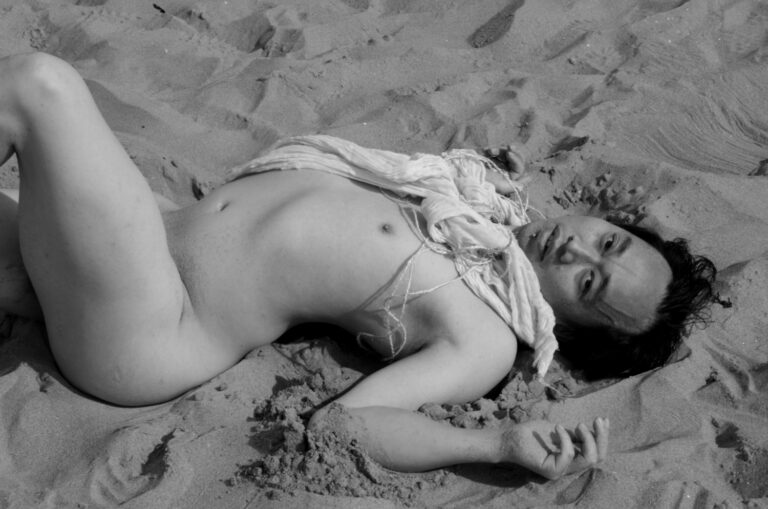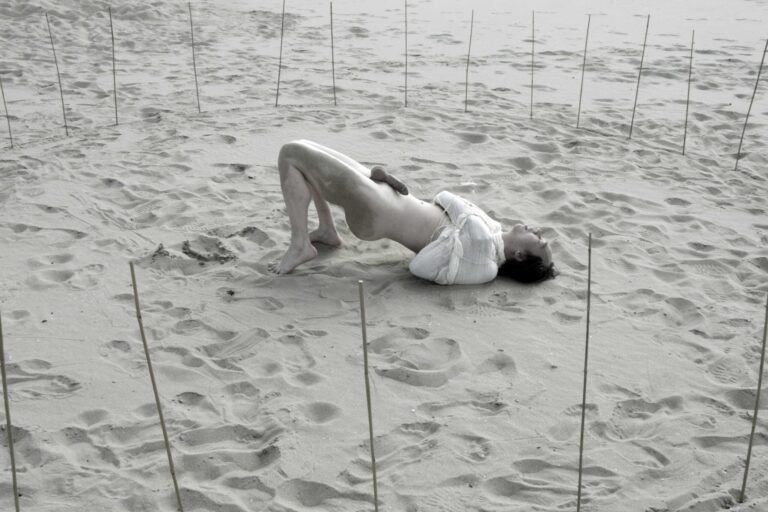Sand (2016) '30
Sandman: Philemon Mukarno’s Butoh Dance on Ibiza’s Shores
The Naked Witness at Dusk
A Radical Choreography on Mediterranean Shores
Sandman is a remarkably breathtaking naked Butoh dance. Philemon Mukarno delivered this moving performance on the white sands of Ibiza. The powerful event unfolded beautifully against the backdrop of dusk. This choreography immediately challenges established cultural taboos concerning public nudity. Furthermore, the performance successfully merges the human body and the natural landscape. It becomes one singular, deeply poetic moment. Consequently, Sandman invites both profound personal reflection and a sense of communal wonder. This work exists powerfully at the boundary of artistic freedom and public acceptance.
Mukarno: The Composer of the Body
Philemon Mukarno is an Asian performance artist currently based in Rotterdam. His artistic career began with rigorous academic training. He pursued complex music composition at prestigious Dutch conservatories. He graduated from these institutions with top academic honors. Later, he specialized intensely in the Japanese Butoh Dance form. This rare synthesis of disciplines fundamentally informs his unique aesthetic. His professional scope covers both detailed electronic music and deeply expressive performance art. His work fuses musical technical rigor with profound spiritual inquiry.
Defining the Central Question
The core purpose of Sandman centers on public nudity as a deliberate artistic strategy. Mukarno uses the unclothed body to directly engage the subconscious. Nudity in Sandman is far more than mere provocation or exposure. Instead, it transforms into vulnerability’s most potent language. It compels the artist to completely abandon his personal comfort zone. Therefore, the art form becomes a direct, honest expression of human structural complexity. The raw body is presented as a site of intensive investigation.
Philemon Mukarno: Synthesizing Spirituality and Form
A Foundation in Compositional Rigor
Mukarno, a native of Jakarta, began his studies immersed in varied musical styles. He excelled quickly at the Royal Conservatory of The Hague. He also completed studies at Codarts, University of the Arts. He was awarded the highly competitive Prize for Composition. His compositions demonstrate original ideas and intense expressiveness. Moreover, his music is marked by a strict control of Form. He employs a powerful “economy of Means” across his entire body of work.
The Body as the Ultimate Vessel
Mukarno views material objects as merely tools for creation. He argues that true art resides instead in the spirit and the human mind. This perspective leads him to approach his art through a deeply spiritual and mental lens. His focus is driven by a non-attachment to material things. This spiritual quest is then explicitly transposed onto the physical body itself. Consequently, the rigor of his musical training translates directly into his physical performance. The minimal setting (sand and dusk) and the exposed body become the ultimate “economy of means” in Sandman.
The Butoh Body as New Medium
Mukarno specialized deliberately in the difficult Japanese Butoh Dance. Butoh allows for a complex, intellectual synthesis of artistic ideas. This powerful medium articulates his complex spiritual philosophy. The performance itself serves as an investigation into the subconscious human self. By using the body, he aims to uncover his profound connection to the earth and his ancestors. Furthermore, he explores universal issues like existential conflicts and human alienation through specific
movements.
The Ankoku Butoh Legacy: Nakedness and Utter Darkness
Post-War Roots of Rebellion
Butoh, known originally as Ankoku Butoh, is the “dance of utter darkness”. It first emerged powerfully in post-World War II Japan. Founders Kazuo Ohno and Tatsumi Hijikata rejected pervasive Western artistic influence. Instead, they sought to create a unique Japanese corporealism. Butoh plunges fearlessly into themes of decay, grotesque imagery, and taboo subjects. The movements are characteristically precise, slow, and often intensely contorted.
Nudity as Physical Rawness
Butoh dancers are often represented as near naked. This established practice emphasizes the performer’s ultimate vulnerability. The absence of clothing dramatically amplifies the emotional honesty of the performance. Historically, nakedness was used to strip away personal identity or history. Conversely, Mukarno uses nakedness to reveal scars and untold stories. He specifically explores gender, sexuality, and nudity in his works. His fluid movements effectively channel deep internal tension for the viewer.
Butoh and Transience
Butoh aligns itself deeply with natural life cycles of life, death, and renewal. It fundamentally embodies transformation, decay, and regeneration. Hijikata himself explored the transmutation of the human form into other states. Mukarno’s movements are slow and deliberate, mirroring the tide’s natural rhythm. This core focus on transience is central to the concept of Sandman. The body becomes a living embodiment of the earth’s elements and systems. The act of being seen fully exposed updates Butoh’s original intent to critique boundaries.
Public Nudity: The Body as a Political Text
Vulnerability Defying the Gaze
Nudity in performance art consistently challenges societal and moral taboos. Performance artists frequently use their own bodies to assert complete autonomy. Carolee Schneemann famously pioneered this approach, reclaiming her public image. Mukarno uses the stark naked body to probe contemporary societal limits. His artistic goal is to dismantle frameworks that warp personal self-image. Therefore, vulnerability serves as the performance’s central and most potent language.
The Performance of Complexity
Mukarno’s work is precisely defined as “raw, bare, naked, and real”. He intentionally explores the full density and complexity of the human structure. The performance forces attending audiences to confront their ingrained preconceptions. It pushes the discussion far beyond simple physical forms and aesthetics. The exposed body effectively serves as a powerful political text. It dramatically collapses the rigid social division between the personal sphere and public discourse.
Butoh Ecology and Elemental Flow
The principles of Butoh are deeply connected to surrounding local landscapes and ecology. This dance form promotes profound ecological awareness and healing. Dancers often embody natural rhythms, such as the cycle of growth and decay. In Sandman, the Ibiza shoreline acts as a dynamic collaborator. The wind actively sculpts the sand surrounding the dancer’s feet. The salt-kissed air noticeably influences each deep inhalation and exhalation. Performance and nature thus coalesce into one seamless, co-creative dialogue. This entanglement goes far beyond mere environmental dance.
The Mystical Resonance of the Sand
Mukarno uses solitude, wind, and sand as critical conceptual layers. Sand represents pure impermanence and the passage of time. The performance time, set at dusk, symbolizes the liminal space between light and utter darkness. Ibiza is renowned for mystical sites like Es Vedra. These spots possess a phenomenal, magnetic spiritual attraction. By grounding the naked dance in this location, Mukarno invokes the island’s ancient, magnetic power. The body aligns its transformation with the earth’s cyclical regeneration.
Choreography of the Ephemeral: Means and Movements
The Butoh-Fu of Impermanence
Butoh movements often rely on a poetic, choreographic language called Butoh-Fu. Mukarno utilizes Butoh’s characteristic, hyper-controlled, and slow motion. He channels his intense internal tension through distorted, fluid gestures. Naked limbs trace ephemeral, delicate shapes within the sand. This momentary record strongly emphasizes the transient nature of existence. Every deliberate movement naturally echoes the rhythm of the slow-moving tide.
Materiality of Skin and Solitude
The dancer’s exposed skin glows visually against the rapidly fading light. This intense visual contrast makes the physical form intensely real. The full complexity and density of the human structure are fully acknowledged. Mukarno incorporates solitude as a vital, primary conceptual layer. Nudity dramatically amplifies the sense of emotional intimacy. Therefore, this intimacy easily transcends the physical act, reaching a collective consciousness.
The Performance as Transformative Ritual
Mukarno performs specifically to articulate his inner consciousness and processes. The art is consciously intended to destroy harmful frameworks warping self-image. The performance serves as a necessary, deliberate rite of passage. He projects dark and vulnerable internal shapes outward through movement. The physical self is exposed as raw, bare, and completely real. The spiritual non-attachment to material art is reinforced by the environment. The marks left by the transient nude body are naturally erased by the wind and tide.
Audience Experience and Lasting Imprint
The Spectator as Active Witness
Viewers gathered contemplative and eager at the shoreline as the sun set. Initial curiosity and quiet whispers quickly transformed into hushed admiration. The audience shifted roles, moving from passive spectators to active, engaged witnesses. Nudity in performance is essential for generating deep controversy and reaction. Mukarno uses this power to forge a direct connection through vulnerability. The move toward reverence validates the spiritual rigor of the performance.
Fostering Communal Dialogue
Immediately after the performance concluded, deep conversations blossomed. These dialogues focused sharply on freedom, body politics, and the definition of art itself. Mukarno’s exploration of gender and human sexuality compels active scrutiny of established social constructs. The work creates an open space for the mutual sharing of life experiences. This collective witnessing of vulnerability generates a profound collective consciousness.
The Enduring Power of the Ephemeral
Although the physical presence of Sandman was temporary, it left a powerful imprint. The intensity of Mukarno’s distinct expressiveness resonated deeply with attendees. By confronting deeply held taboos through naked honesty, the art inspires personal growth. Butoh does not aim for large-scale mass appeal. Instead, it seeks to deliver profound emotional essence (ekisu). This enduring spiritual impact confirms the validity of his radical methods.
Redefining Art and Authenticity
Sandman powerfully demonstrates the transformative capacity of naked performance. Philemon Mukarno effectively disrupts conventional artistic norms through bare vulnerability. This singular Ibiza beach performance fundamentally redefines boundaries. It stands as an enduring celebration of creative liberation and human fragility. The work achieves maximum existential depth using the most minimal material means.
Mukarno’s work secures his unique position in the field of contemporary art. He achieves a complex synthesis of rigorous Western training and Eastern Butoh philosophy. His art serves as vital resistance against a society that frequently seeks to numb and desensitize. Sandman functions as a crucial commentary on human authenticity and body politics. The performance is a quiet, yet formidable masterpiece. It cements Philemon Mukarno’s reputation as a true master of artistic form and means.

